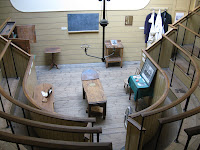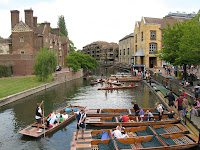 rch that was once attached to the ancient St. Stephen’s Hospital, this museum holds the oldest surviving operating theatre in Europe, in use from the 1820s to 1860s. To get in, you must climb about 30 steps up a winding and very steep wooden staircase which takes you into the gift shop, about the size of a small bedroom, then more stairs up to the herb garret (where herbs used to be dried back when this room was part of St. Stephen’s) which houses a collection of medical instruments from the last few centuries. The real centrepiece, though, is of course the operating theatre itself. It is quite nightmarish to imagine what people en
rch that was once attached to the ancient St. Stephen’s Hospital, this museum holds the oldest surviving operating theatre in Europe, in use from the 1820s to 1860s. To get in, you must climb about 30 steps up a winding and very steep wooden staircase which takes you into the gift shop, about the size of a small bedroom, then more stairs up to the herb garret (where herbs used to be dried back when this room was part of St. Stephen’s) which houses a collection of medical instruments from the last few centuries. The real centrepiece, though, is of course the operating theatre itself. It is quite nightmarish to imagine what people en dured in the era of before what we think of as modern medicine, that is, pre-anaesthetic and antiseptic. About 150 to 175 doctors-in-training would crowd into this little space (wearing their regular old street clothes, of course – no germ theory at this point in time!) to observe and learn from operations being carried out, from kidney stone removal to amputation (often required due to infections set in from open wounds). The original wooden (!) operating table is still in the room, complete with grisly saw marks from operations long past. It was a fascinating glimpse into another time, thankfully now behind us.
dured in the era of before what we think of as modern medicine, that is, pre-anaesthetic and antiseptic. About 150 to 175 doctors-in-training would crowd into this little space (wearing their regular old street clothes, of course – no germ theory at this point in time!) to observe and learn from operations being carried out, from kidney stone removal to amputation (often required due to infections set in from open wounds). The original wooden (!) operating table is still in the room, complete with grisly saw marks from operations long past. It was a fascinating glimpse into another time, thankfully now behind us.We emerged into the sunshine and made our way to the nearby Borough Market, another holdover from the 19th century full of stalls selling fresh spices, veggies, meat, fish and cheeses. It’s directly below a set of train tracks, so you can hear the trains rumbling overhead every few minutes. We spent the rest of the afternoon ambling along the south side of the Thames.




